by Taylor Sapp
Published by Alphabet Publishing
As a teacher with more than 15 years experience in Japan and America teaching ESL students of all ages, and as someone who’s always loved both reading and writing, I’ve seen a lot of different attitudes from students towards these subjects. Sometimes a student says “I love reading” or “Writing is my strength,” and one often seems to go with the other. Similarly when a student says either “I hate reading,” they seem to also hate writing. There is a common-sense link between these two skills.
A lot of my students look at something like graded readers of classic literature such as The Count of Monte Cristo and have a difficult time approaching it. How do these kinds of works relate to them? And when students ask the bigger meta-question “Why should I read for pleasure?” What is the right answer to that? This is not a common tradition in some cultures or environments, so the very notion of reading non-academic materials is something that has to be addressed.
There are two issues here I’ve tried to address with my collection: Why should students read for pleasure, what are the benefits, and how do they connect these skills with writing? In my experience trying to teach one, it seemed natural to connect them.
Methodology
As stated above, reading and writing are connected and the two are used in our daily lives much more than we realize. With the growing importance of social media, we are all being creative daily, obsessed with making stories in a new format! Naturally, with the cultural mixture in my classrooms, I noticed different strengths in reading and in writing. Finding activities to explore this link was a big challenge to me!
So how can schools produce better readers? Research suggests writing twice as much with 1/2 the rules! “Habitual reading and writing have a positive relationship with creative thinking, especially the ability of elaboration” (Wang, 2012). Elaboration is a crucial skill, and one that ESL students often struggle with in their academic writing. This is where exposure to creative formats can be a huge boost to their writing in general.
According to Graham “We tend to think about writing as a solitary activity but it’s not really…We’re always writing for an audience. A lot of the writing we do outside of school involves interaction with others. Think about social networks now: We post something online, somebody responds, we respond back. There’s a lot of interactive writing going on.” (cited in Pierce, 2018).
Stories Without End – Information about the collection
Stories Without End is my attempt to bridge the link between reading skills, reading for pleasure and both creative and academic writing, teaching students to enjoy reading and writing and to enhance their active and passive skills.
SWE is a collection of 24 open-ended stories on some creative and unexpected topics, each followed by a number of discussion activities and creative projects. The stories are designed to be engaging and “outside the box”.The stories in this book will challenge the students’ assumptions about gender roles, relationships, the meaning of success, and even reality itself. Students will be driven to engage with the stories, whether they agree or disagree with some of the views in them.
Most importantly the stories are open-ended and unfinished. The activities and projects that follow each story are focused on getting students connecting to the stories through writing.
Adaptability is a keyword. I’ve tried to create a ‘something for everyone’ approach. The target is ESL and literacy learners of all ages from Beginners to Intermediate to Advanced. The collection is adaptable to other types of learners as well. I’ve had positive feedback from teachers working in everything from elementary to adult literacy environments. The topics are varied with a “Something for Everyone” approach, meant to encompass a variety of genre and maturity levels.
In the name of flexibility, Stories Without End includes two types of stories:
- Short takes are skeletons or writing prompts that gives the Ss just enough of a beginning for reading, but really push them creatively. The focus here is on writing.
- Medium takes are the opposite. These are full sketches that could almost stand-alone as stories, but with lots of activities and opportunities for expansion. The focus here is more extensively on reading, but there is still a lot students can do to expand on the stories.
Description with examples
I’ve posted an example story to give you an idea how the collection works. This is one of the Short Takes which could be used as a quick warmer or a full-class activity. Each story follows several steps.
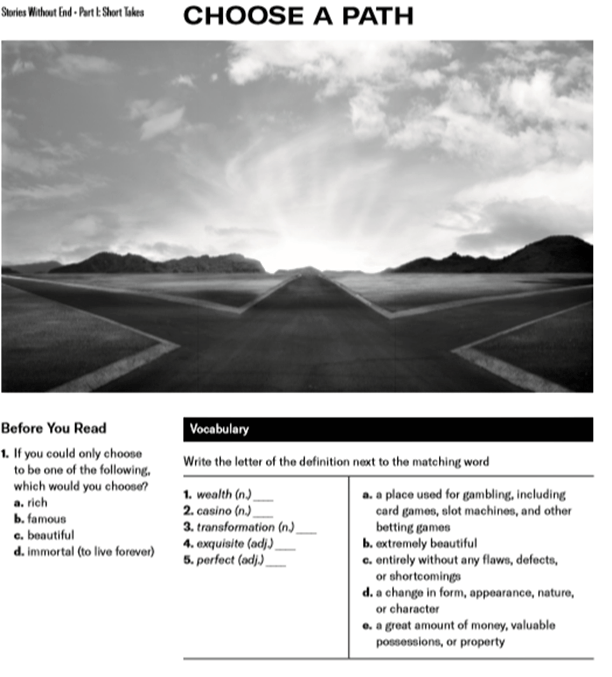
1.Before you read: Have students discuss these questions in pairs or groups You can use these questions as interview homework.
2. Vocabulary preview, which students can do in group or as homework, or even as a quiz. Students can also maintain a vocab journal as well.
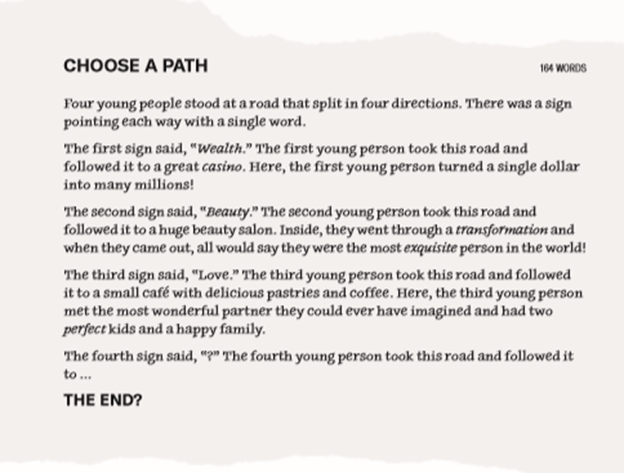
3. Reading: The readings are short enough to be read in class either individually or collectively. In my experience, I like to read-aloud together as a full class, but there are lots of possibilities! For example, you can read stories in class individually, read together as a full class or in reading groups, or assign them as homework.
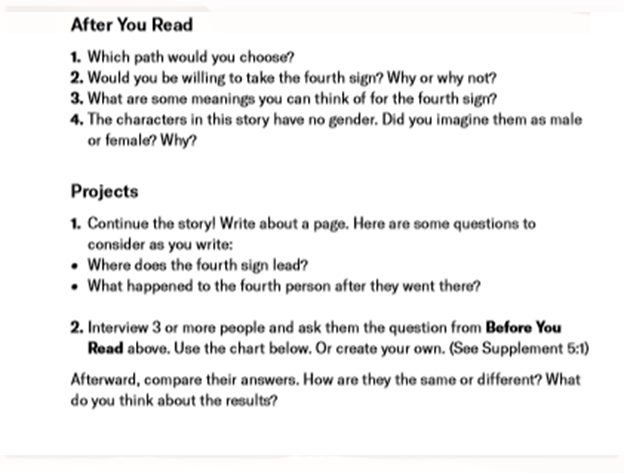
4. After you read, there are discussion questions to go over in class, or have students ask them as an interview for homework.
5. The Projects which have students respond to the story. The first project is always to finish the story! This is the main focus of the projects! You can do the first story together in class and have students complete it in groups. Students should also complete stories as homework. You can give students the option to choose other projects for their own story.
This is where the teacher has the most flexibility. I’ve had lots of success simply having students discuss the after you read questions. Having them discuss and share ending ideas orally can be a very fun and interactive activity. For the teacher that really wants to spend more time on the writing, as intended, giving students time to write endings individually or collectively, in class or for homework, gives the teacher lots of options. Personally, I like to mix up the methods with each story.
Additional Supplements
In addition, SWE includes 6 Categories of Supplements and over 20 additional activities for additional expansion. They are divided into the following categories: Summaries, Illustrations, Writing, Media, Interviews and Language Expansion.
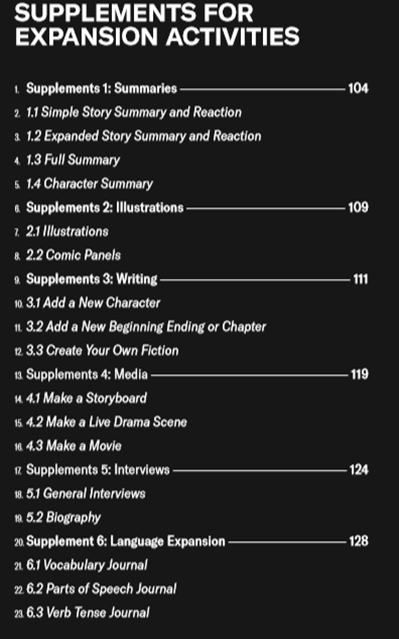
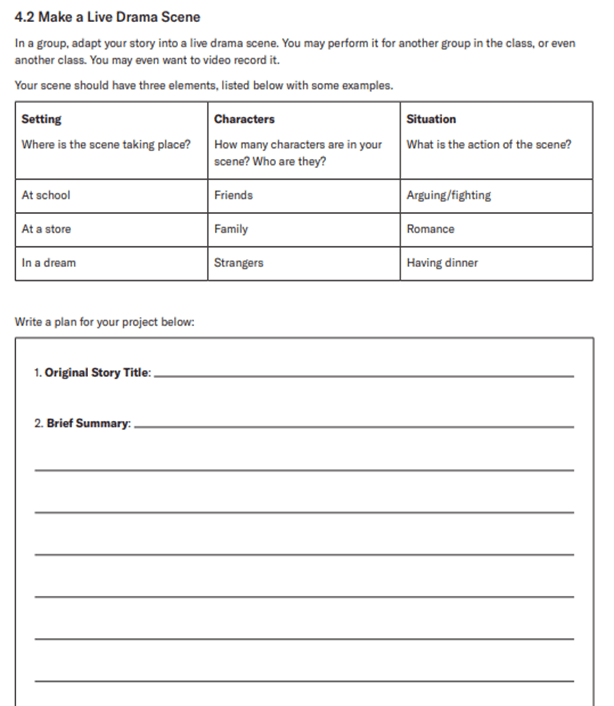
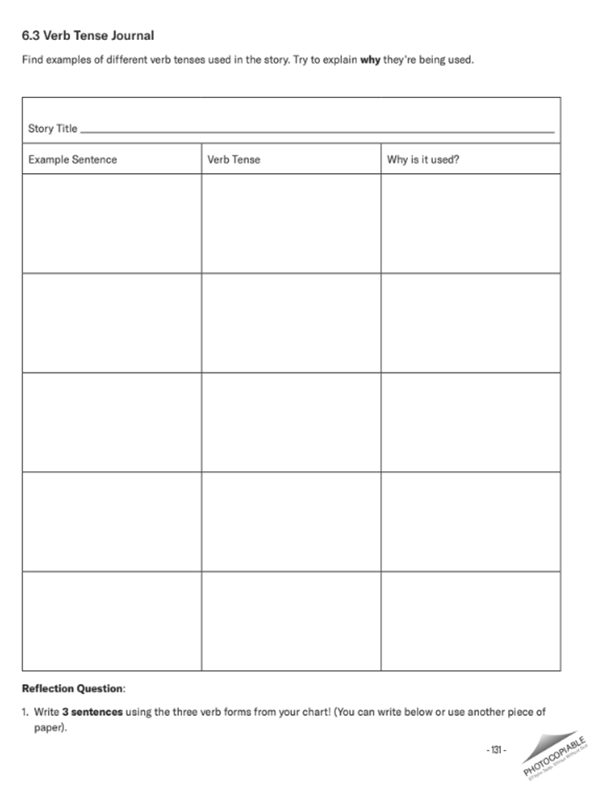
Conclusion
I hope you will find this resource useful in your classroom! The positive feedback has been tremendous, and most importantly, students tell me it’s a lot of fun! As a teacher myself, having easy-to-use, pick-up-and-play activities has always been a huge positive and I’ve tried to create a book that teachers can use to make their classroom more dynamic and more fun!
References:
- Pierce, D. (2018, January 01). What Is The Relationship Between Reading And Writing? It’s Linear -. Retrieved April 15, 2019, from https://www.teachthought.com/literacy/relationship-between-reading-writing/
- Wang, A. Y. (2012). Exploring the relationship of creative thinking to reading and writing. Thinking Skills and Creativity, 7(1), 38-47. doi:10.1016/j.tsc.2011.09.001




